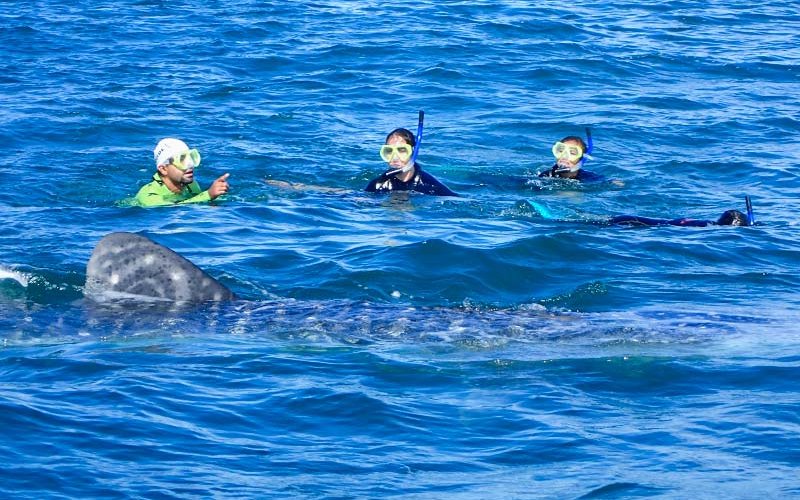
Undergraduate Julia Teeple is taking a bite out of shark research. She is studying shark teeth, which could have important implications to create bio-inspired filters.
Teeple is studying the teeth of the whale shark, basking shark and megamouth shark to find out more about the feeding mechanics of these large filter-feeding sharks, under the mentorship of faculty adviser Misty Paig-Tran.
As the Discovery Channel hosts its traditional summer Shark Week (Aug. 9-16) about innovative shark research and insights on shark species, CSUF marine scientists and their students are working on research projects to learn more about these misunderstood predators of the seas. Their research is continuing, in spite of the pandemic. See related stories: Greenland shark research and whale shark research.
Paig-Tran, assistant professor of biological science whose research focuses on studying the filtration mechanics in large fishes, including whale sharks and manta rays, relayed that the tooth structures in large filter-feeding sharks may be affecting the flow, and in turn, the filter efficiency.
“I’m studying whether the teeth of these filter-feeding sharks, with each tooth only about one-eighth of an inch in length, filter plankton more efficiently. It’s interesting to study because these large sharks are using their tiny teeth in such an unconventional way, which has implications for designing better filters for human use,” Teeple added. “Since surface roughness on an animal can affect drag, we’re interested in visualizing how these teeth are affecting water flow.”
The researchers are collaborating with other experts in the field to gather shark teeth specimens and images. Teeple, a biological science major focusing on ecology and evolutionary biology, has created 3D models of whale shark and basking shark teeth using computer-aided design technology.
The models are based on measurements of real shark teeth from the Natural History Museum of Los Angeles County. Using photos of shark jaws from their collection, she used image processing software to measure the spacing and size of the teeth.
The next step of her project when she is able to work again in Paig-Tran’s campus lab is to use a 3D printer to create models of shark teeth on the three species and conduct experiments to visualize the flow patterns. Once research travel is possible, the researchers also plan to conduct research in Mexico to study whale shark feeding habits with their Mexican collaborators.
Teeple, a scholar in the Southern California Ecosystems Research Program (SCERP), became fascinated with sharks after taking a study abroad course in Baja, Mexico, in January, where she witnessed whale sharks feeding in their natural habitat.
“It was crazy to learn that these gigantic fish feed on tiny, microscopic plankton. This firsthand experience motivated me to study how these awesome animals function,” said Teeple, who plans to pursue a career related to conservation or environmental security, which examines threats caused by environmental problems.
“Being a part of undergraduate research has been an incredible experience. I am grateful to Dr. Paig-Tran and the SCERP mentors who have created such a positive and supportive environment to learn and develop as a scientist.”
Contact: Debra Cano Ramos, dcanoramos@fullerton.edu